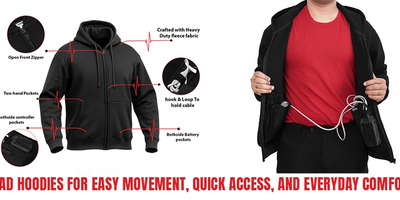
What is a Heart Pump and How Does It Support Failing Hearts
The heart is the organ in our body that pumps blood and provides oxygenated blood to the organs for their proper functioning. When the heart stops functioning properly, you may feel symptoms like edema, shortness of breath, and chest pain. The cause behind this can vary from patient to patient, but it occurs due to some disease or genetic defect of the heart.
When this happens, your doctor suggests treatments, one of which is circulatory supportive devices. For example, a Left Ventricular Assistive Device, or LVAD, is implanted in the heart to compensate for its functional loss. These devices help the heart pump blood more efficiently and supply oxygen-rich blood to the organs in the body. Let’s discuss how many types of devices or mechanical hearts can be used and how these devices work.
How the heart pump blood?
Your heart has four chambers, two on the right and two on the left. The deoxygenated blood with carbon dioxide and other waste from the whole body reaches the right upper chamber of the heart through two blood vessels. After that, the blood moves to the lower right chamber, from where it enters the lungs to remove waste from the blood and make it oxygen-rich. After that, the blood enters the heart in the upper left chamber and then the lower left chamber. Both sides of the heart work in sync and beat in rhythm to make sure that the blood pumps from one chamber to the other and then, after the oxygenation process, moves out of the heart to reach every organ of your body.
The heart muscles strongly contract and pump blood from the heart to the main artery, the aorta, from where each of the organs gets its nutrients and oxygen from the blood to function properly. Without this blood supply, your organs do not function properly, which can lead to various other problems.
When the heart functions become compromised due to some disease or structural damage, your doctor may suggest implanting another heart, known as a mechanical heart or artificial heart, which is used to replace or assist the weakened heart.
What are heart failure medical devices?
Heart failure is a condition in which the heart becomes incapable of supplying enough blood to the whole body. In such conditions, medical devices are used to replace or simply assist the heart. An artificial heart pump for congestive heart failure can also be used. Some of the medical devices that are used are described below:
Types of heart devices:
Many circulatory supportive devices have been used in medical settings nowadays. Each patient is unique, and your doctor decides to implant the specific device in your heart according to your specific condition. Here are different types of ventricular assist devices that your doctor may suggest to treat your symptoms:
-
RVAD devices:
RVAD is a Right Ventricular Assistive Device that is implanted on the right side of the heart. The right side of the heart pumps blood to the lungs for oxygenation. When it becomes inefficient due to some disease or after undergoing a surgical procedure, RVAD is used to assist the heart in pumping blood. RVADs are not commonly used as LVADs, but it is one of the life-saving circulatory devices and are used in patients with right-sided heart failure.
-
BiVAD devices:
In cases like severe heart failure and ischemic heart disease, both sides of the heart fail to pump blood. In such cases, BiVAD or Biventricular Assist Devices are used, which overtake both the right and left sides of the functioning of the heart and pump blood to the lungs for oxygenation and to supply it to the whole body. Patients with terminal heart diseases, who need a heart transplant as a permanent treatment from a donor, can benefit from the device.
-
TAH devices:
TAH is a Total Artificial Heart. As the name indicates, TAH is a device that not only assists the heart in performing its function, but it totally replaces the heart. When the heart undergoes irreversible damage that cannot be treated with medications or surgery, it may require this TAH device. It can also be a permanent treatment for patients who are not suitable for heart transplant surgery.
-
LVAD devices:
LVAD or Left Ventricular Assist Device is another type of circulatory assistive device that assists the left side of the heart to pump blood to the whole body. A patient with heart failure may need an LVAD for recovery or while waiting for their heart transplant. Many patients receive LVAD as a permanent treatment because they are not suitable for a heart transplant surgery. However, understanding the LVAD device benefits and risks is crucial for patients with advanced heart failure.
How does the LVAD heart pump support failing hearts?
A failure of the heart to pump blood and supply oxygen-rich blood to the whole body is a condition when you need a supportive device like an LVAD. LVAD is one of the widely used heart pump machines and is very effective in improving the symptoms of heart failure, such as shortness of breath, fatigue, fluid retention, and chest pain. This guide will help you understand the device and how it is effective in supporting failing hearts. For you to understand this completely, you must know what LVAD components are and how this device works. Here is a beginner’s guide to LVAD:
What does LVAD consist of?
An LVAD or Left Ventricular Assist Device consists of the following components that work together to support the functioning of the heart. LVAD has both internal components that are implanted into your heart and the external components that remain outside the body.
Internal Components of LVAD:
LVAD Pump: It is an implanted unit that is surgically placed inside the chest, into your heart. This pump connects the left ventricle to the aorta, which means it pumps blood from the heart to the artery that supplies blood to the whole body. This pump works all the time and supports your heart 24/7.
Driveline Cable: Driveline is a cable that connects the internal pump to the external components of LVAD. It is a thin cable that passes through the skin from the pump to the external controller. The driveline comes out of your skin from the abdominal area so that you can easily access the site for cleaning and monitoring. It is this cable that carries power and command between the pump and external components.
External Components of LVAD:
Controller: As the names indicate, this LVAD component controls the functioning of the pump. It is a computer that processes the LVAD pump. It also alerts the healthcare provider and patient in case of any issue or if the battery needs to be changed. You have to wear this small computer around your waist or shoulder to keep it near you all the time.
Power Source: Batteries or a power unit is the power source of the LVAD, from which the pump gains power to work. The LVAD batteries are available with a rechargeable feature and offer portability. You can also plug these batteries into a power unit while resting or sleeping. In case of emergencies, you need to keep two power sources for safety purposes.
Each component of the LVAD is essential for the LVAD to operate reliably and help patients maintain blood circulation.
What is a heart pump and how does it work?
A heart pump is another term used for LVAD, or Left Ventricular Assist Device. Your doctor may suggest that you go for LVAD implantation because of the severe heart failure. It is an LVAD’s primary job to support the pumping ability of the heart by increasing the amount of blood delivered to the body.
You have to go for surgery in which your doctor implants the LVAD in your heart. The LVAD pump is connected to the left ventricle, so that it can help to pump blood out of the heart. The pump inside your heart spins at a very high speed and pumps out blood through a small tube from the ventricle. It then pushes that blood into the aorta, which is the main artery that carries oxygenated blood to the rest of the body.
You need to understand that LVAD is not replacing the complete functioning of your heart, but it only assisting your heart to perform its function. Your heart still beats on its own and is performing its function, and an LVAD boosts the flow of blood. This almost doubles the amount of circulation to your organs and tissues for their normal functioning. As a result, you start to feel that your symptoms of heart failure, such as fatigue and shortness of breath, are relieved and are no longer that severe.
Many patients have experienced an improved quality of their life after getting an LVAD, as they are now able to walk longer distances, perform daily tasks more easily without any help, and experience less fatigue at the end of the day.
Types of LVAD:
There are three main types of LVADs in use today: pulsatile-flow, continuous-flow axial, and continuous-flow centrifugal pumps. Pulsatile-flow LVADs work like the natural heartbeat with pulsating movements. These types of LVADs are not commonly used due to their larger size and mechanical complexity.
Continuous flow axial pumps are of two types: HeartWare and HeartMate. These pumps use a spinning rotor to move blood in one direction and are more compact and durable. Most of the advanced types of devices are designed to reduce friction, which further reduces the risk of stroke. When comparing HeartMate III vs HeartWare, HeartWare has been discontinued due to safety concerns, and HeartMate III is a standard choice due to its safety and performance. Each type supports patients differently, based on their condition and lifestyle needs.
How can you keep your LVAD with you 24/7?
One of the most essential things you need to adjust after receiving an LVAD is to keep it protected and secured, while wearing it on your body all the time without any break or without giving it a rest. It is important for both your safety and well-being.
The LVAD system requires you to carry its external components, like the controller and batteries, at all times, no matter if you are sleeping, walking, resting, travelling, or doing some physical activity. General clothing and traditional bags or belts are not made to carry your LVAD and are unsafe for long-term use. Here, you need a proper set of clothing or apparel that can do your work for you. Luckily, we have gear for you that makes a big difference. LVADGear's specialized clothing and accessories are designed with patient needs in mind. The founder of LVADGear himself was an LVAD user and invented the apparel to help patients like him. Although he received a heart transplant and is living a healthy life, he has dedicated his business to people with LVAD.
LVADGear is a brand that provides you with LVAD-specific clothing, such as LVAD shirts, vests, belts, and bags that make your everyday life easier and more comfortable. LVADGear lets you carry your device discreetly and comfortably day and night, as they have built-in pockets, secure straps, and breathable fabrics. They are specifically designed to accommodate your equipment and balance the weight equally. The LVAD apparel also prevents strain on your driveline and keeps you mobile and confident, at home or on the go.
Conclusion
In conclusion, the LVAD is an important device that helps people with heart failure. It supports the heart by helping it pump blood more effectively, improving symptoms like shortness of breath and fatigue. There are different types of devices, such as RVAD, BiVAD, and TAH, each designed for specific heart problems. Your doctor will choose the right device based on your condition. While medications and surgeries are also options, the LVAD can be a vital solution for many patients, especially those waiting for a heart transplant or unable to undergo surgery. But to live a good quality of life with LVAD, you need LVAD clothing.
Prev post

What is the difference between BrioVAD and Heartmate?
Updated on 27 May 2025
Next post

LVAD Device Explained: Benefits, Risks, and Recovery
Updated on 28 April 2025








